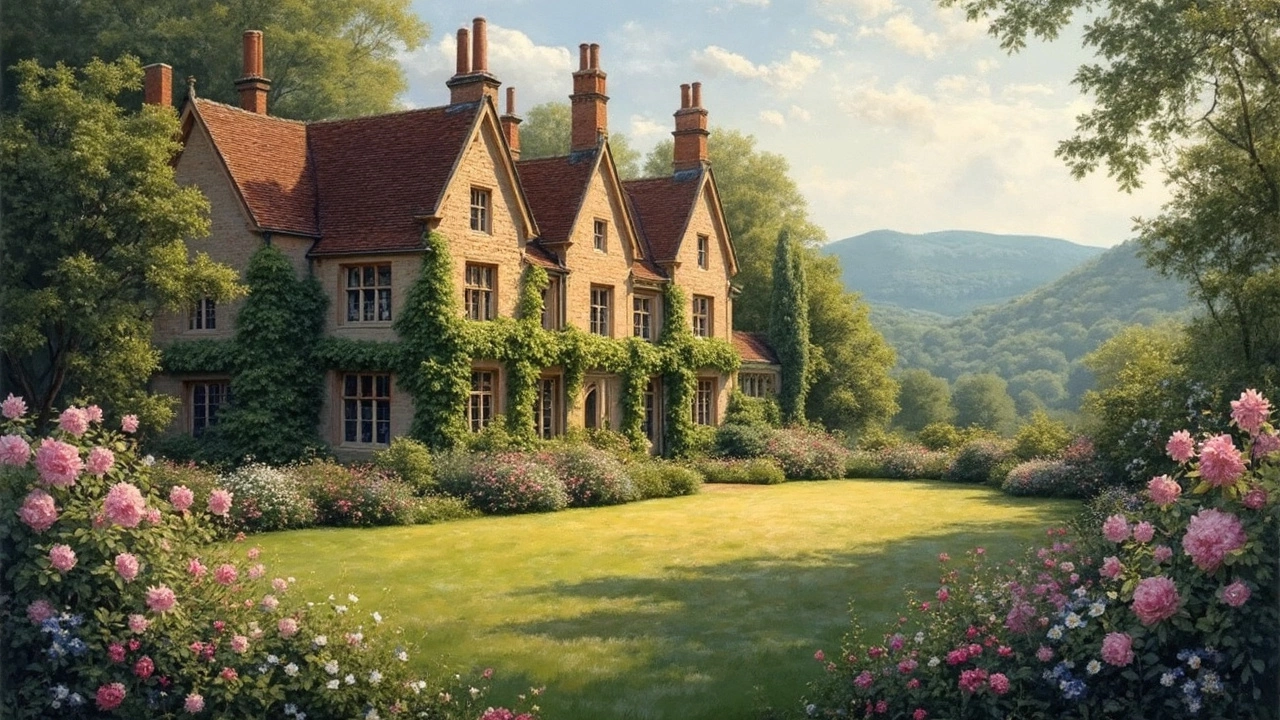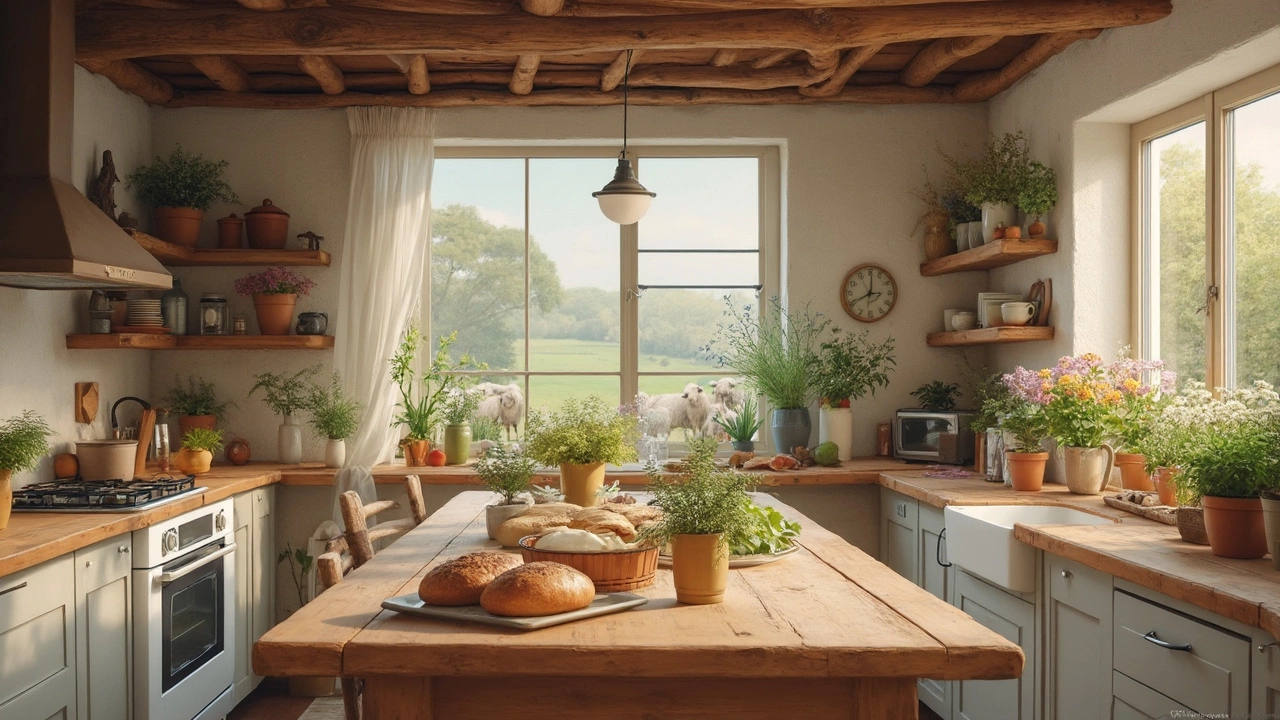What Defines a Country House? Essential Features, Styles & Living Tips
 Jun, 29 2025
Jun, 29 2025
Ever wonder why some houses feel like they belong in a Jane Austen story, while others just feel like, well, a house with grass around it? The idea of a country house is loaded with dreams and clichés—rolling hills, chintz curtains, perhaps a lazy dog on the porch, maybe a secret garden out back. But what does it really take for a place to be called a country house? The answer is less about size and more about a mix of location, history, style, and feeling. In New Zealand, and plenty of spots around the world, a country house is both an escape and a statement. Capturing its essence means peeling back a few layers and digging into culture, architecture, and lifestyle. It’s messier—and much more interesting—than you might guess.
Defining a Country House: More Than Location
Ask ten people on the street what makes a house a "country house" and you’ll get ten answers, each sprinkled with nostalgia and personal taste. Most folks start with geography—the house has to sit outside of a city or suburb, right? Sure, being away from the bustle is part of it, but just plunking a modern mansion in a meadow doesn’t instantly give it that badge. A true country house is bound up in its setting. It’s usually tucked in or near farmland, bushland, or the rolling, wind-swept hills you get an hour outside Wellington. The plot is often sprawling. If you’re lucky, there might be a creek (or at least a pond stubbornly defending its existence every dry spell).
Beyond geography, the vibe matters—a country house aims to feel part of the land. You’ll often see natural materials like timber or stone, big windows to draw in sunlight, and gardens that feel lived-in rather than landscaped to within an inch of their roots. While the classic image is a big old farmhouse with creaky floorboards, there are modern twists, too. Some are architect-designed masterclasses in glass and simplicity, but still reflect their landscapes. So, while a country house does usually need to be rural, what truly matters is how it fits with its surroundings and way of life. A sense of coziness and independence—they’re hidden country house rules nobody writes down, but everybody feels the moment they cross the threshold.
Classic Features That Set a Country House Apart
When someone says "country house," certain images come to mind: broad verandas, deep porches, real fireplaces crackling in the evening, and maybe a vegetable patch or chook house just a stone’s throw from the kitchen window. The heart of a country house is its relationship to the outdoors. French doors that invite you to wander the garden barefoot, windows framing storms as much as sunsets, timber beams that could tell stories if you listened hard enough. Practicality has shaped these homes. Wide eaves keep rain off the walls (a big deal in New Zealand’s four-seasons-in-a-day kind of climate), mudrooms save the carpet from grazing boots, and thick insulation holds in the warmth.
You’ll spot certain floor plans over and over—a big kitchen, usually with a table at its center, a fireplace or wood burner, and generous communal areas for neighbors to drop by uninvited. Kitchens tend to be the real HQ. Bedrooms aren’t glamorous but are snug, often tucked under sloping roofs. The décor isn’t flashy. Instead, it’s welcoming: think stoneware, wooden dressers, handmade throws, and time-softened sofas. Sometimes, these touches come from generations of family, sometimes from thrift shops and auctions, but always from a need to combine comfort with utility. Don’t forget the garden—roses running wild, herbs scrambling for sun, an orchard patch doing its unpredictable thing in the corner.

The Evolution of Country House Styles
Country houses have come a long way from grand estates and rambling Victorian farmhouses. The oldest country houses in England, like Blenheim or Chatsworth, were built to show off wealth and taste. You might recognize these palatial piles from TV dramas, all glimmering chandeliers and fox-hunting prints. In New Zealand, country houses grew from very different roots: practical settlers’ cottages built for warmth and shelter, later expanded into gracious villas or barn-like family homes. Over the past century, the definition has widened even more.
Today, you’ll find everything from weatherboard bungalows to modernist, open-plan homes with all the bells and whistles—solar panels, rainwater collection, and sprawling decks to star-watch with the kids. The heart that connects them is their respect for the land. Even minimalist new builds, with their sleek lines and passive heating, borrow from the age-old lessons of country living. People want warmth, air, and a sense that life flows from indoors to outdoors. Meanwhile, inside, trends come and go. Some embrace full “cottage-core” nostalgia, others prefer a bare-bones, Scandinavian approach. But every real country house looks lived in, not staged.
Living in a Country House: Practicalities and Perks
Much as the fantasy goes, living out in the country isn't just sipping tea and listening to birdsong. Real rural life can be muddy, windy, and always a bit unpredictable. The rewards are huge: room for the kids (like my daughter Eulalie) to run wild, the smell of fresh grass after rain, space for starter gardens or wildflower patches. Days fill with small rituals—chopping wood, feeding hens, walking before dusk. Technology helps but doesn’t fully invade. Good Wi-Fi exists, but nobody moves out here just to stream TV faster.
There’s a knack to making country life work. First, learn your local weather. Wellington’s winds will make a mockery of dainty patio furniture and delicate rose trellises. Get to know your neighbors—they’re your best backup, whether you need to borrow a ladder or call for help in a storm. Practical tips: invest in sturdy boots and a raincoat that actually works. Secure your rubbish bins (I’ve fished mine out of a gorse bush more times than I’ll admit). Learn when to garden, when to batten down the hatches. Country houses often need more maintenance. Fences deteriorate, paths disappear under weeds, and gutters fill at an astonishing pace. But all those chores knit you to the land and the house in ways city living rarely manages.

How to Bring the Country House Charm Home
Maybe a sprawling country pile isn’t in the budget (yet!), but you can still add country house touches no matter where you live. Start small: clear off a kitchen table and fill it with mismatched crockery, a vase of foraged flowers, and an old quilt. If you’ve got a patch of grass—and kids eager to dig—grow a few veggies or herbs. Open your windows wide on blustery days; let the landscape, whether it's city or rural, become part of the vibe.
Inside, go for things that feel honest and enduring: timber, pottery, wool blankets, and soft lighting. If you have room for a fireplace, it becomes an instant heart of the home. Otherwise, create “hearth moments” with candles and cozy chairs. Library nooks, wall hooks for coats and baskets, and family photos among artworks all add a sense of welcome. The trick isn’t matching photos from magazines—it’s letting your home suit your life and connect to what’s outside. And if you’ve got kids, let them scatter mud and grass and half-finished crafts. A little wildness goes with the territory. After all, what makes a country house shine isn’t perfection. It’s that mix of practicality, personality, and a certain lived-in sense that you, and your house, are exactly where you belong.